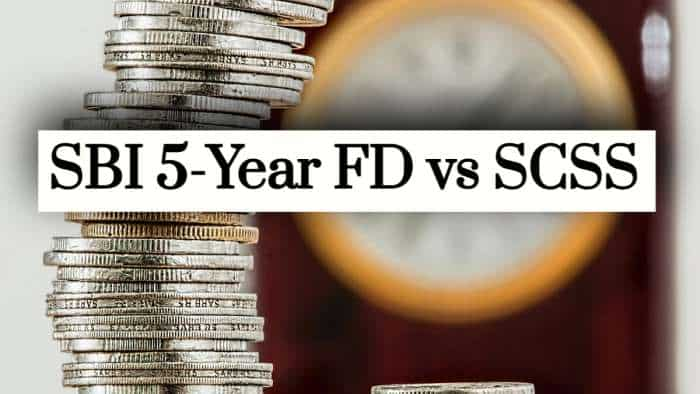Ease of doing business: Now, check out the reality here
When looking at the Ease of Doing Business (EODB) rankings for states, two things need to be kept in mind. One, state governments promise a number of reforms but some of these remain only on paper and this is now getting captured via the industry feedback option used in this year’s rankings.

When looking at the Ease of Doing Business (EODB) rankings for states, two things need to be kept in mind. One, state governments promise a number of reforms but some of these remain only on paper and this is now getting captured via the industry feedback option used in this year’s rankings. Two, Maharashtra and Delhi remain the top contenders for foreign direct investment (FDI) in India, never mind their EODB rankings being well below the toppers Andhra Pradesh and Telangana. EODB rankings are a reminder to laggard states to pull up their socks, but manufacturers take investment decisions after considering several other parameters like a ready market for their products, office location, land availability etc.
In the latest round of EODB rankings by the Department of Industrial Policy and Promotion (DIPP) and the World Bank, Andhra Pradesh (AP) has once again received top honours with a combined score of 98.42%. And Telangana is marginally lower at 98.33%.
Maharashtra, the topmost FDI destination - it accounted for almost a third of the total FDI coming into India in the last 18 years - had a combined score of 92.71% and ranked 13th on the EODB list, behind Jharkhand, Gujarat, Chhattisgarh and Rajasthan. Delhi, the second most popular destination for FDI (it accounted for a fifth of the total FDI inflows between 2000 and 2018) was ranked at 23rd position out of total 34 state rankings. Haryana (98.07%), Jharkhand (97.99%), Gujarat (97.96%) and Chhattisgarh (97.36%) follow the two southern states in the EODB rankings.
So, what did AP do right for the second year in a row to top the EODB rankings? Speaking to DNA Money, AP’s state planning commission vice chairman Kutumb Rao said the state had, last year, launched an initiative called “AP Public Service Guarantee Act 2017” which guarantees a time-bound dispensation of more than 60 services. These include providing electricity connections, environmental clearances etc. in the promised time or else the defaulting officer is penalised through salary deductions. Rao said more than 99% applications for starting a business are cleared in the stipulated time in his state.
A closer look at two scorecards - reforms and feedback - shows why some states surprise on the EODB rankings. Maharashtra has a reasonably good scorecard of 97.29% in reforms - the initiatives it says it has taken to improve EODB. But when it comes to industry feedback (whether the reforms were actually implemented), it scored just 50.29%. For Delhi, the discrepancy between actual and paper reforms is even more glaring: 33.99% on paper but just 6.4% through industry feedback. Is it any wonder then that the FDI poster boys are behind others in EODB rankings?
AP scored 99.73% on reforms and 86.5% on feedback while for Telangana the corresponding figures were 100% and 83.95%, respectively.
All the North Eastern states and Chandigarh had a zero on feedback rating; Delhi was just above Kerala which had a dismal 1.97% feedback rating. Tamil Nadu, an otherwise highly industrialised state, had a reform reading of 95.93% but a feedback reading of only 43.9%.
Apart from the discrepancy in reforms and their actual implementation, some states suffer from another inherent disadvantage. Madan Sabnavis, chief economist at Care Ratings, said new states have an advantage as far as EODB rankings are concerned.
“New states start from scratch and can introduce transparent policies, have online systems for execution. Larger states with legacy issues have to go in for transformation and would hence take more time to comply with all the points on the list. Similarly, states which do not have certain systems can start afresh with these compliances. For example, anything digital will also mean that all old records have to be transferred simultaneously, which will take time for larger states that have to undergo a major transformation. A new state has to start afresh and would naturally start off with the digital superstructure in place, hence AP and Telangana scored. Same would hold for Jharkhand, which though old is still a virtual post reform state.”
Watch this Zee Business video here:
It is thus fair to say that the EODB rankings do not necessarily mean there will be high investments in states which top this chart, the rankings are mere enablers. For example, Bihar and Jharkhand get investments for mining irrespective of the environment as these are mineral-rich states. Maharashtra has the best infrastructure for ancillaries, ports, roads, power and would draw high investment, regardless of its EODB rank. Same holds true for Gujarat and Tamil Nadu.
EODB rankings help bring in investments to a state when there is a toss between two states, but that does not happen often. In any case, the government’s decision to use only the feedback method to do future rankings is welcome, since it will ensure only those reforms which are actually implemented by each state are recognised while calculating rankings from next year.
The latest EODB rankings come days before the World Bank’s annual Ease of Doing Business report, 2017. Last year, India jumped 30 places to settle at the 100th rank.
Source: DNA Money
Get Latest Business News, Stock Market Updates and Videos; Check your tax outgo through Income Tax Calculator and save money through our Personal Finance coverage. Check Business Breaking News Live on Zee Business Twitter and Facebook. Subscribe on YouTube.
11:05 AM IST













 Budget 2023-24 Expectations: PHDCCI suggests a 5-pronged strategy to revitalize private investments as FM Sitharaman kicks off pre-budget consultations
Budget 2023-24 Expectations: PHDCCI suggests a 5-pronged strategy to revitalize private investments as FM Sitharaman kicks off pre-budget consultations National Logistics Policy to boost easing of doing business, cut transportation cost significantly: Industry experts
National Logistics Policy to boost easing of doing business, cut transportation cost significantly: Industry experts Overseas Investment Rules and Regulations, 2022: Another step by Modi Govt towards Ease of Doing Business - FULL PDF, Key Details
Overseas Investment Rules and Regulations, 2022: Another step by Modi Govt towards Ease of Doing Business - FULL PDF, Key Details  Commerce Ministry relaxes certain norms under EPCG scheme to promote ease of doing business
Commerce Ministry relaxes certain norms under EPCG scheme to promote ease of doing business Measures to reduce compliance burden have multiplier effect on ease of doing business, says Piyush Goyal
Measures to reduce compliance burden have multiplier effect on ease of doing business, says Piyush Goyal